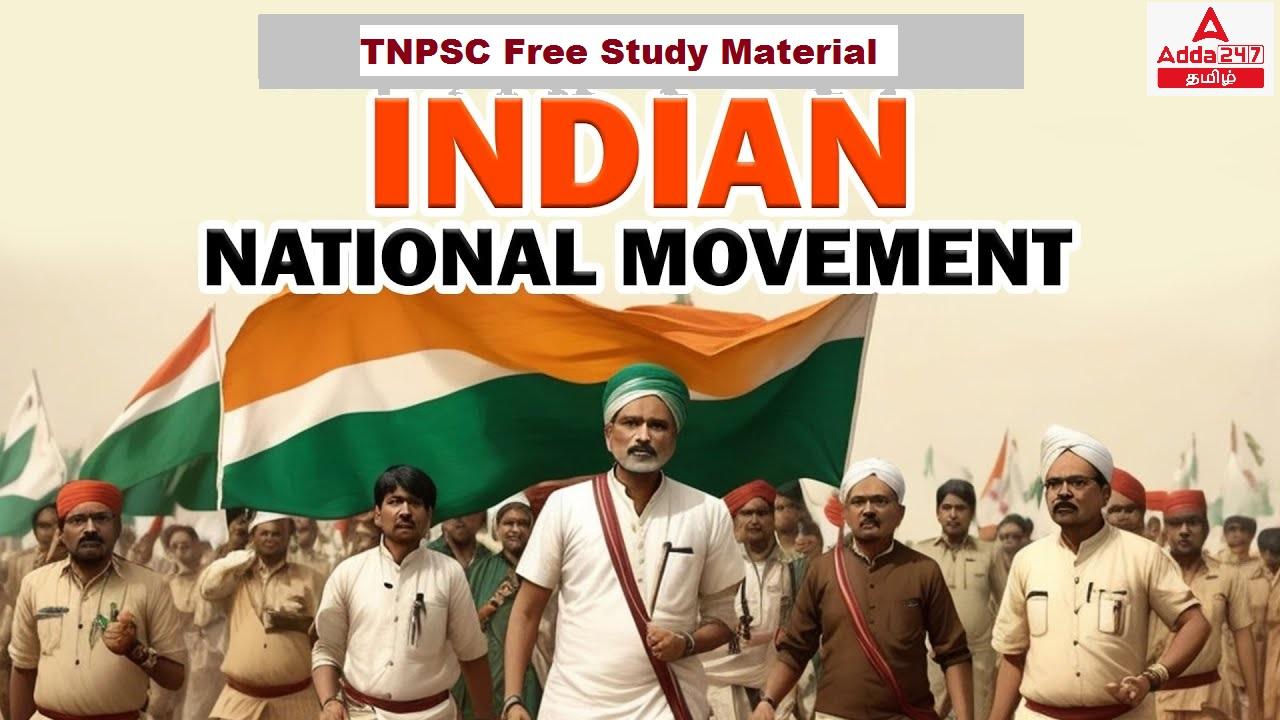இந்தக் கட்டுரையில், TNPSC குரூப் 1, குரூப் 2, குரூப் 2A, குரூப் 4 மாநிலப் போட்டித் தேர்வுகளான TNUSRB, TRB, TET, TNEB போன்றவற்றுக்கான முறைகள் இலவசக் குறிப்புகளைப் பெறுவீர்கள்.தேர்வுக்கு தயாராவோர் இங்குள்ள பாடக்குறிப்புகளை படித்து பயன்பெற வாழ்த்துகிறோம்.
Salt Satyagraha
Gandhi and Nehru Arrest
Gandhi’s ritual at Dandi, defiance of the salt laws started all over the country.
April 1930 – Nehru’s was arrested for defiance of the salt law evoked huge
demonstrations in Madras, Calcutta and Karachi.
May 4, 1930 – Gandhi’s was arrested at midnight and sent to Yeravada Jail.
Gandhi had announced that he would lead a raid on Dharasana Salt Works on the west
coast.
Gandhi’s arrest was followed by massive protests in Bombay, Delhi, Calcutta and in
Sholapur, where the response was the most fierce
After Gandhi’s arrest, the Congress Working Committee sanctioned
Non-payment of revenue in ryotwari areas;
No Chowkidara tax campaign in zamindari areas
Violation of forest laws in the Central Provinces.
Salt Satyagraha in Different places
In Tamil Nadu – Salt Satyagraha was launched by Rajaji from Tiruchirappalli on 13th April
1930and reached Vedaranyam on 28th April 1930.
In North West Frontier Province – Khan Abdul Ghaffar Khan led the movement. He
organized the Khudai Khidmatgar, also known as the Red Shirts Movement.
In Malabar – Salt Satyagraha was launched by K.Kelappan.
In Andhra – Salt Satyagraha was organised as district salt marches in East and West
Godavari, Krishna and Guntur.
In Orissa – Salt Satyagraha was launched by Gopalbandhu Chaudhuri in the coastal
regions of Balasore, Cuttack and Puri districts.
In Assam – Salt satyagraha was failed due to growing conflicts between Assamese and
Bengalis, Hindus and Muslims, and the tensions developing from the inflow of Muslim
peasants from the densely populated east Bengal.
Chandraprabha Saikiani, in December 1930 organized to break forest laws Kachari
villages.
In Bengal – Subhas Bose and J.M. Sengupta witnessed powerful movements developed
around salt Satyagraha and chaukidari tax. During the same period, Surya Sen’s
Chittagong revolt group carried out a raid on two armouries and declared the
establishment of a provisional government.
Bihar – Champaran and Saran were the first two districts to start salt Satyagraha.
In Patna – Ambika Kant Sinha break the salt law in Nakhas Pond.
Chhotanagpur tribal belt of (now in Jharkhand) – Bonga Majhi and Somra Majhi,
influenced by Gandhism, led a movement in Hazaribagh, in which supporters were
asked to give up meat and alcohol and use khadi.
Salt Satyagraha – 2
Sholapur
Industrial town of southern Maharashtra.
May 7- Textile workers went on a strike and along with other residents burnt liquor
shops and other symbols of government authority such as railway stations, police
stations, municipal buildings and law courts, etc. are fiercest response to Gandhi’s
arrest.
Dharasana
May 21, 1930 – Sarojini Naidu, Imam Sahib and Manilal (Gandhi’s son) took up the
unfinished task Dharasana Salt Works.
The unarmed and peaceful crowd was met with a brutal lathi charge, in which 2 dead
and 320 injured.
This new form of salt Satyagraha was adopted in Wadala (Bombay), Karnataka
(Sanikatta Salt Works), Andhra, Midnapore, Balasore, Puri and Cuttack.
Gujarat
The impact was felt in Anand, Borsad and Nadiad areas in Kheda district, Bardoli in
Surat district and Jambusar in Bharuch district.
No-tax movement was organised, which included refusal to pay land revenue.
Maharashtra, Karnataka, Central Provinces
Defiance of forest laws such as grazing and timber restrictions and public sale of illegally
acquired forest produce was occurred in these areas.
United Provinces
A no-revenue campaign was organised, a call was given to zamindars to refuse to pay
revenue to the government.
Under a no-rent campaign, a call was given to tenants against zamindars.
Manipur and Nagaland
Rani Gaidinliu – A Naga spiritual leader at the young age of thirteen followed her cousin
Haipou Jadonang and raised the banner of revolt against foreign rule.
“We are free people, the white men should not rule over us,” she declared.
She urged the people not to pay taxes or work for the British.
Extent of Mass Participation
Several sections of the population like Women, Students, Muslims, Merchants and Petty
traders, Tribals, Workers and Peasants are participated in the Civil Disobedience Movement.
Women
Women played a important role by picketing outside liquor shops, opium dens and shops
selling foreign cloth.
Students
Along with women, students and youth played the most prominent part in the boycott of
foreign cloth and liquor.
Muslims
Middle class Muslim participation was quite significant in Senhatta, Tripura, Gaibandha,
Bagura and Noakhali.
In Dacca, Muslim leaders, shopkeepers, lower class people and upper class women were
active.
The Muslim weaving community in Bihar, Delhi and Lucknow were also effectively
mobilised.
Merchants and Petty Traders
Traders associations and commercial bodies were active in implementing the boycott,
especially in Tamil Nadu and Punjab.
Tribals
Tribals were active participants in Central Provinces, Maharashtra and Karnataka.
Workers
The workers in Bombay, Calcutta, Madras, Sholapur, etc. actively participated
Peasants
Peasants of the United Provinces, Bihar and Gujarat were also actively participated
*************************************************************************
| Adda247 TamilNadu Home page | Click here |
| Official Website=Adda247 | Click here |









